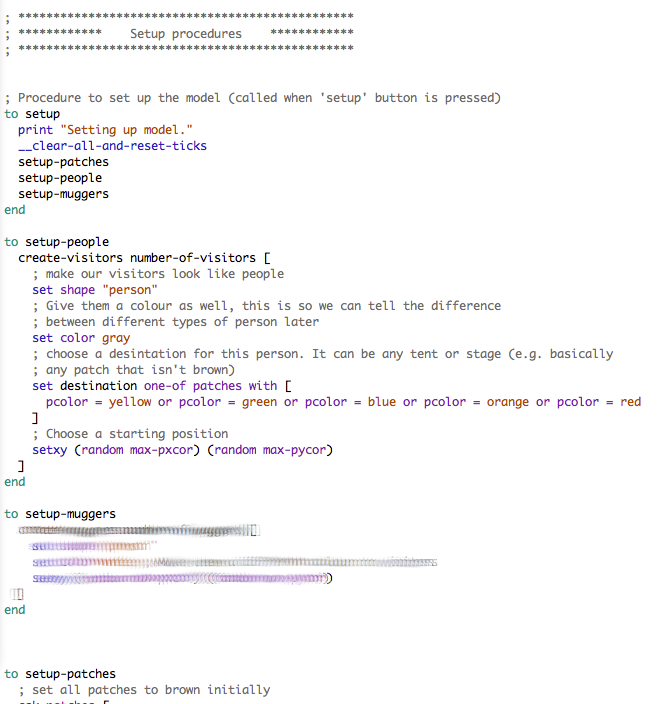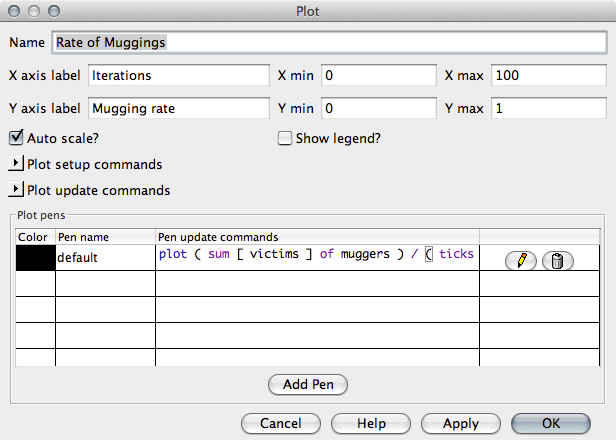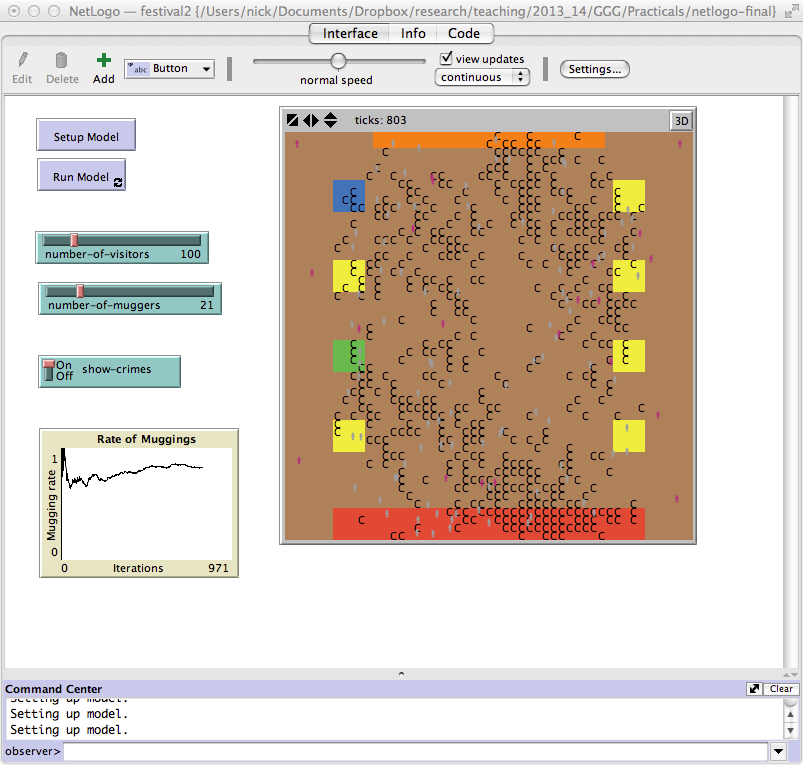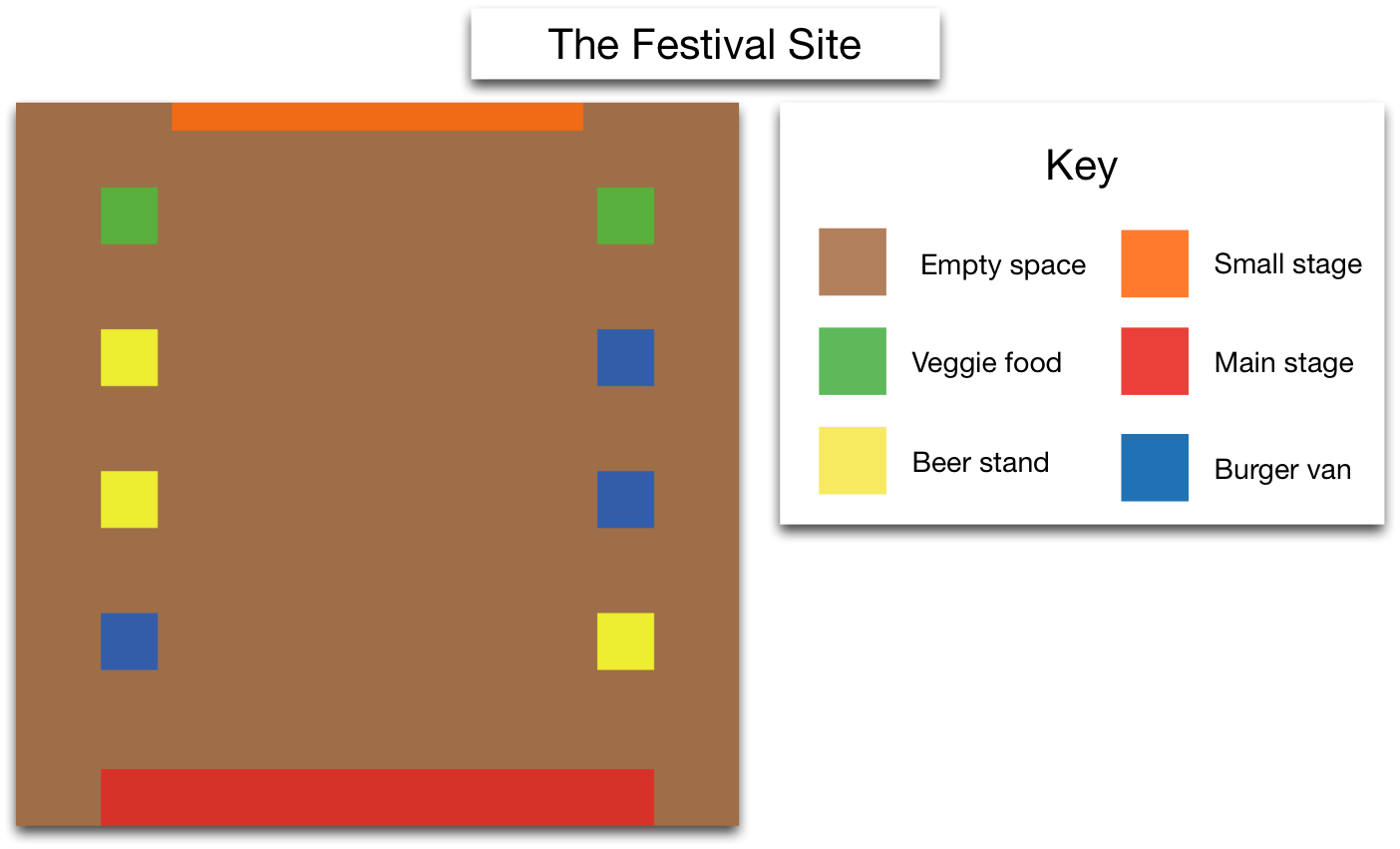Creating Mugger Agents
breed command -
if you can't remember how this command works check the
NetLogo Programming Guide
or refer to the last practical.victims' that the muggers will use
to keep track of the number of people they mug. Hint: the muggers-own
command will do this, as covered in the last
practical.Now, NetLogo knows that there are two types of agents in the model. The next thing to do is actually create some muggers
number-of-muggers'.
This will be used to set the number of mugger agents. You can choose the limits of the
slider - I choose a limit of 100 and default of 10.
setup-muggers'.
This procedure should create the new mugger agents and do three things:
- Set their shape. This could be "person", like the visitors, or something else if you choose - see the NetLogo shape editor guide for other shapes.
- Set their colour. Choose something so that you can tell the difference between 'visitors' and 'muggers' but don't choose a colour that is already being used by patches (if you do this then when a mugger moves onto a patch of the same colour it will be camouflaged and invisible).
- Move them to a randomly chosen position.
setup-muggers' procedure in the main
'setup' procedure, just after the
call to 'setup-people. By the end, your setup procedures will look similar
to the right image. Sorry, the setup-muggers procedure has gotten smudged,
you'll have to work out what goes in there on your own!Criminal Behaviour
The next stage is to implement some behaviour for the mugger agents. We need a procedure that will move the muggers around the environment and, if they come into contact with a visitor, commit a mugging.
show-crimes.
This will be used later to turn on (or off) a label that shows where crimes have
been committed.Next, we will create a new procedure that controls the behaviour of the mugger
agents. There is already a procedure called 'move' that tells the visitor
agents what to do at each model iteration. No we need a similar procedure that will
tell a mugger to walk around the festival site and, if they come across a
visitor, mug them.
move-and-mug'. This procedure will
contain the code that we need to control the mugger agents.| Code | Explanation |
|---|---|
to move-and-mug |
The procedure is called 'move-and-mug'. It will control where the agents go and make them mug visitors if they happen to meet on the same patch. |
rt (random 360)fd 1 |
These commands make the muggers move around the environment randomly. They don't move between food stalls and stages like the visitors do. |
if count visitors-here > 0 [ |
Important! This commands checks to see if there are any visitors on the same patch as the mugger. If there is at least one visitor on the patch, then any code after the square bracket will run. |
set victims ( victims + 1 ) |
This code will only be executed if there are victims here. It increases
the value of the mugger's victims variable by 1 unit. This tells
us that a mugging has taken place. |
if show-crimes = True [
|
The last thing we want to do, after a mugging, is (optionally) to show
where crimes have taken place. This command checks to see if
the show-crimes switch is set to 'on'. |
ask patch-here [ |
Ask the patch where the mugging has just taken place ... |
set plabel-color black |
... to create a label that has black text ... |
set plabel "C" |
... and shows the letter 'c' (as in 'crime'). |
]] |
Closing braces for the if show-crimes = True and
ask patch-here commands. |
] |
This closing bracket closes the count visitors-here > 0
statement above. |
end |
Finish the move-and-mug procedure. |
go' procedure after the visitors have moved:
ask muggers [
move-and-mug
]

plot ( sum [ victims ] of muggers ) / ( ticks + 1)
(note: ticks+1 is used to prevent problems with dividing by zero
when the model starts).


